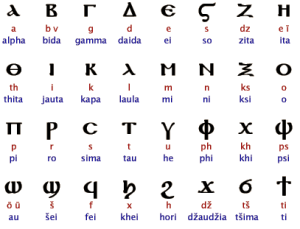Coptic Language
The Coptic Language is the fourth and last step of evolution of the Ancient Egyptian language, after Hieroglyphs, Heratic and Demotic. All four are identical and differ only in their system of writing. Coptic, just as Ancient Egyptian, is a Hamito-semitic language, similar to many North African languages and with few similarities to semitic languages, such as Hebrew and Arabic. Its alphabet is derived from the Greek alphabet, with seven extra letters that represent sounds peculiar to the Egyptian language and non-existent in Greek.

